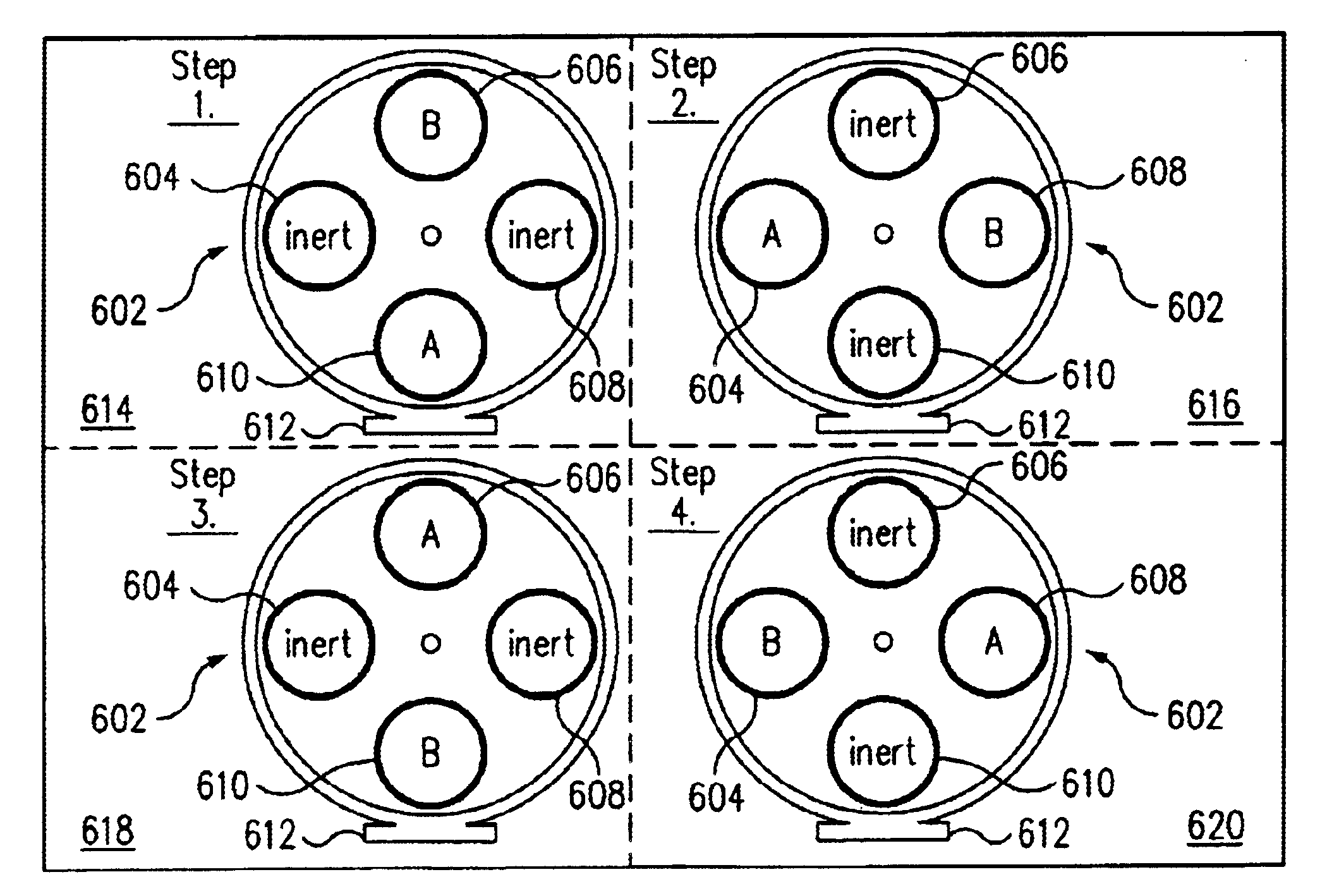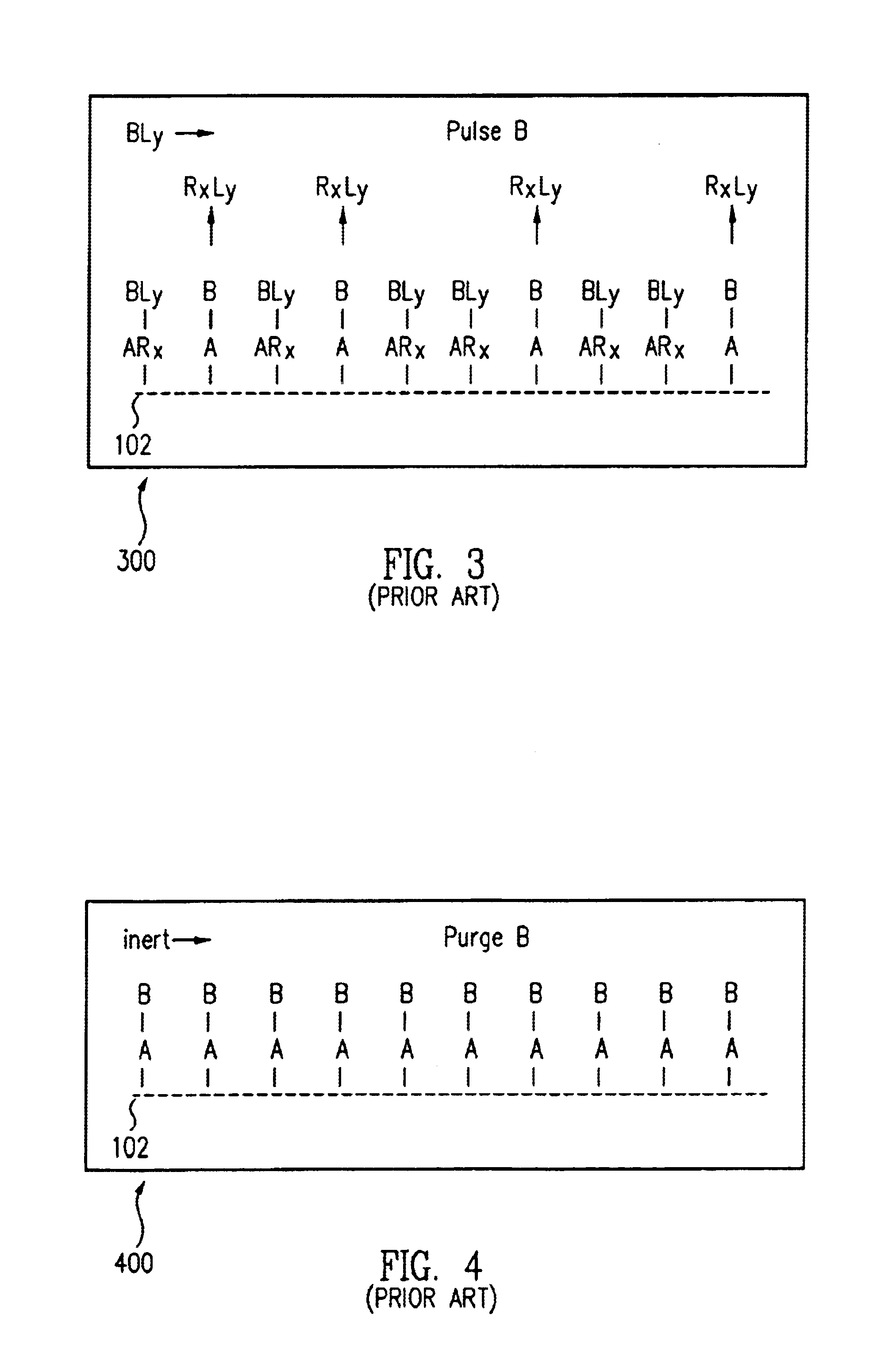Atomic layer deposition systems and methods
a technology of atomic layer and deposition system, which is applied in the direction of polycrystalline material growth, crystal growth process, chemically reactive gas growth, etc., can solve the problems of limiting the throughput of the typical ald approach, limiting the total cycle to a typical time of approximately seven seconds, and a number of limitations
- Summary
- Abstract
- Description
- Claims
- Application Information
AI Technical Summary
Benefits of technology
Problems solved by technology
Method used
Image
Examples
Embodiment Construction
[0035]FIG. 5 shows a multi-wafer sequential deposition module 502 in accordance with an embodiment of the present invention. Multi-wafer sequential deposition module 502 includes five stations 504, 506, 508, 510, and 512 that are used to process wafers (e.g., such as wafer 516). Note that the number of stations provided by multi-wafer sequential deposition module 502 could vary depending upon the user's requirements. Stations 504 through 512 are each equipped with a wafer heater and a showerhead (which are not shown) and are optionally isolated from each other through the use of a continuous inert gas purge between, and independent pumping around, each station. An example of a multi-wafer sequential deposition module 502 is the Concept Three system by Novellus Systems (San Jose, Calif.).
[0036]Multiple wafers are processed sequentially and concurrently, receiving a portion of their total deposition thickness at each station. As an example, a wafer, such as wafer 516, enters multi-waf...
PUM
| Property | Measurement | Unit |
|---|---|---|
| time | aaaaa | aaaaa |
| thickness | aaaaa | aaaaa |
| electrical power | aaaaa | aaaaa |
Abstract
Description
Claims
Application Information
 Login to View More
Login to View More - R&D
- Intellectual Property
- Life Sciences
- Materials
- Tech Scout
- Unparalleled Data Quality
- Higher Quality Content
- 60% Fewer Hallucinations
Browse by: Latest US Patents, China's latest patents, Technical Efficacy Thesaurus, Application Domain, Technology Topic, Popular Technical Reports.
© 2025 PatSnap. All rights reserved.Legal|Privacy policy|Modern Slavery Act Transparency Statement|Sitemap|About US| Contact US: help@patsnap.com



